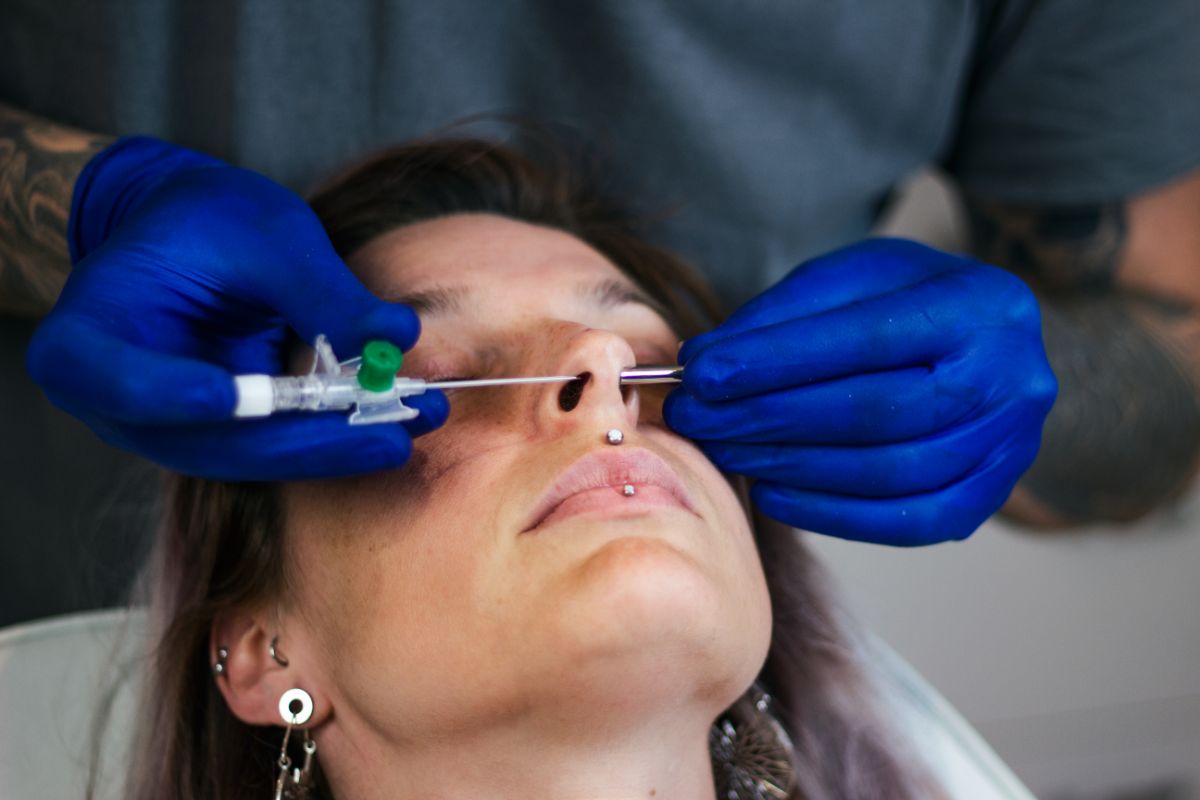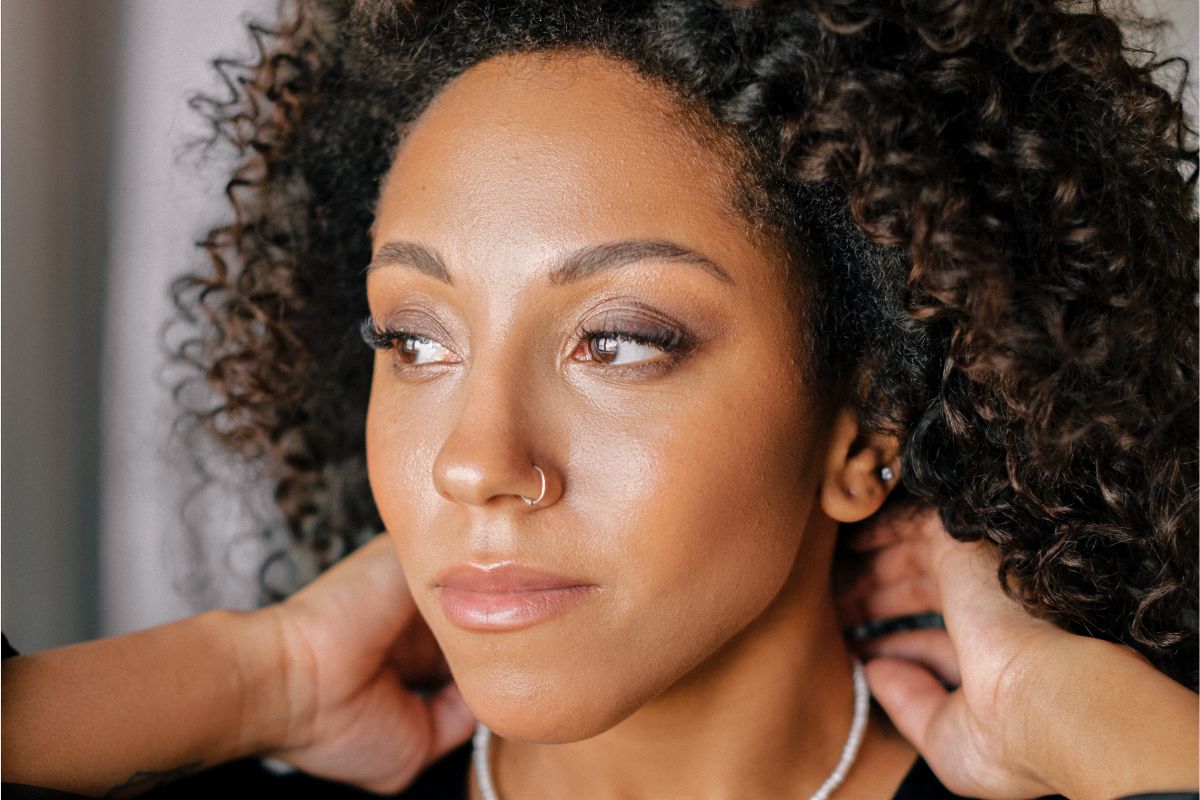People who are into piercings are no longer afraid to explore other parts of their bodies. They are taking advantage of the fact that the skin is the largest organ, and there are so many unexplored places waiting to be pierced.
Surface piercings fit this description. Surface piercings are flat areas in your body that you can pierce, like your upper cheek and chest.
Conventional piercings have an entry and exit hole. The exit hole is usually behind the entrance, but with surface piercings, the two are next to each other on the skin's surface.
To do this, your piercer will have to pinch your skin and insert the needle through it. The result is a double-pierced design right on top of your skin.
You might confuse a surface piercing with a dermal piercing. They do look alike when you look at aesthetics, but you’ll know their difference if you check the holes.
Again, surface piercings have an entrance and exit hole; while a dermal piercing has an anchor under the skin to keep it in place, this means it only has a single piercing point. There is no exit hole.
Surface piercing is an excellent choice if you’re ready for a new look and you want to try something different. The best part is you can use the style almost anywhere in your body.
However, before you book an appointment with your piercer, there are several things you need to know about surface piercings and surface piercing aftercare. Here’s what you can expect.

Questions About Surface Piercings Answered
Do Surface Piercings Hurt?
All forms of body piercings will cause pain to some extent. But, the pain can vary depending on your pain tolerance and the body part pierced. The piercing location is a significant factor influencing the level of pain felt.
As mentioned earlier, your piercer will pinch your skin and stick the needle through it. The pain should be the same as all other piercings in the fleshy parts of your body. To compare, getting a piercing near your eye or your nape is more painful compared to a surface piercing near your collarbone.
Some piercers prefer to use a scalpel instead of a needle for a deeper pierce but if they choose this route, expect it to be more painful. If you’re not satisfied with our answer, you can talk to your piercer and ask about the pain related to surface piercings.
How Long Does It Take for a Surface Piercing To Heal?
The downside to surface piercing is that it takes much longer to heal than ear and nose piercings. So, if you’re keen on getting a surface piercing, make sure you’re ready to commit to twelve months of healing time.
But, the healing time is not conclusive. Some people heal faster, while others heal much longer. Also, just like the pain level, the healing time depends on the location of the piercing site.
Another disadvantage of a surface piercing is that it has a higher risk of rejection because of its placement. Since the jewelry is placed flat under your skin, your body will detect it as a foreign object and attempt to push it out.
However, you can minimize this risk by following proper aftercare instructions and choosing high-quality jewelry. When you make these sacrifices early on, you will reap the benefits in the future.
But, professional piercers do not offer guarantees. There are cases wherein even if people followed aftercare guidelines; their bodies still rejected the piercing. Observe your piercing so you can detect migrating jewelry before it leaves a scar.
How Much Does It Cost?
The piercing cost will depend on the location you want, but generally, you should pay between $50 and $100. Since this is a challenging piercing, we recommend hiring an experienced, skilled, and reputable piercer. Part of the success of your piercing depends mainly on the expertise of your piercer.
How Should You Care for Surface Piercings?
One might think that the aftercare might be more complex than other mainstream piercings because of its eccentricity. Still, the truth is all piercings pretty much follow the same aftercare guidelines. So here’s what you need to do to care for your surface piercings.
#1 Make Sure It Doesn’t Snag
The biggest threat to your piercing is rejection. If your jewelry gets snagged all the time because you’re not being careful, there’s a big chance it will get rejected. Sadly, their location makes them prone to snagging.
So, before you get a surface piercing, think about it long and hard. The places that are prone to snagging are your collar bone, pubic area, and the nape of your neck. In addition, you have to be extra careful when brushing your hair or changing clothes during the healing process.
#2 Don’t Play With Your Jewelry
If it’s out of habit, you’re in a danger zone. Did you know that you're increasing piercing rejection risk if you keep moving your jewelry? We usually discourage people from getting pierced in their eyebrows or cheekbones because these areas move a lot when you smile and talk.
#2 Clean Your Piercing
The most important aftercare rule for all piercings is to keep the site clean. Rinse the area with saline solution at least three to six times a day throughout the healing period to avoid infection and rejection.
Make it a part of your daily routine so you won’t forget. Don’t experiment with creams, sprays, and ointments, as these products may potentially irritate the site.

If you're looking for a safe product to clean your piercings, Dr. Piercing Aftercare can help.

At Dr. Piercing Aftercare, we've developed convenient medicated swabs that you can use to clean your piercings and keep infection away. We are proud of our products. They are made and tested in a cGMP compliant and FDA-registered facility in America.
We use advanced technology on our swabs for easy application. Each pack contains thirty-six medicated swabs that are proven and tested to promote your body's natural healing process while preventing infection. Contact us today, or check out our website to learn more about our products.





